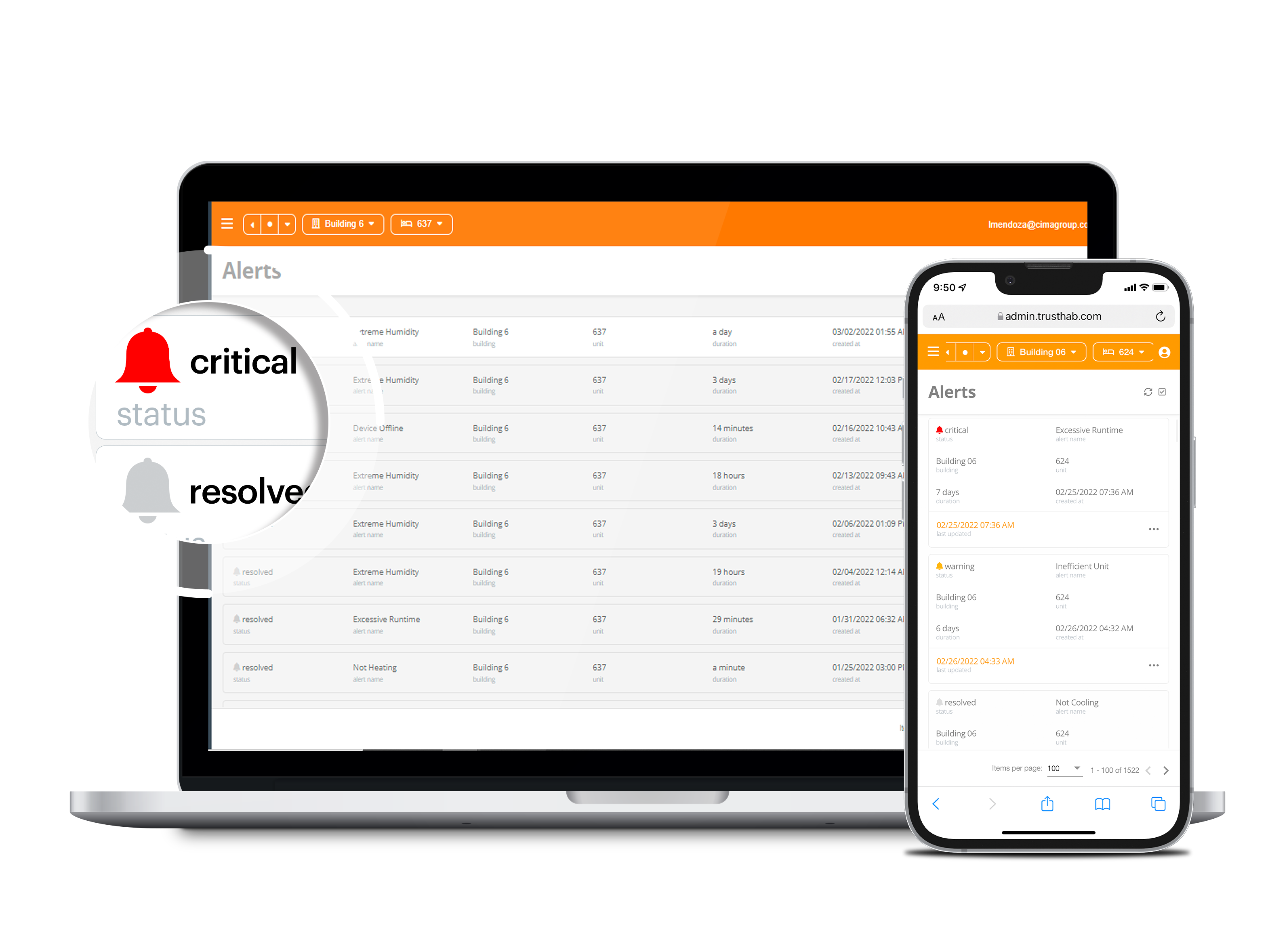If a unit has consistent humidity that is above 65% and an ambient temperature at or above 80 °F, mold can begin to grow after just 24 hours.
While high humidity levels for an extended period of time can be conducive to mold growth, it’s important not to allow humidity levels to get too low either. This can be equally as destructive to equipment and personal belongings.
With TrustHab’s Humidity Control Logic you can take advantage of automated rule creation, which will allow you to continuously monitor humidity in vacant and occupied residences and ensure the appropriate levels are maintained at all times.

Avoid costly mold remediation
Dealing with the existence of mold is not only an extreme hassle for both staff and residents, but it is also one of the biggest expenses to hit your budget. Controlled humidity levels help you to avoid conditions that are conducive to mold growth.
Enhanced comfort and reduced sickness
Maintaining a comfortable level of humidity is important for productivity and helping to avoid viruses like the flu. A consistent, stable relative humidity level not only makes it more difficult for viruses to be transmitted, it helps residents stay sharp, alert and focused.
Improved HVAC efficiency
Increasing the relative humidity can make people feel warmer in the winter, so they are less likely to boost the heating. That also means the HVAC system doesn’t have to work as hard to achieve temperature set points, so you’re saving on general wear and tear.
Protect wooden surfaces and belongings
Wood expands with increases in relative humidity, and shrinks when humidity drops. Even if your property does not contain wooden flooring in residences, things like cabinets, furniture, fabrics, leather, and books are also guaranteed to last longer with controlled humidity levels.
If a unit has consistent humidity that is above 65% and an ambient temperature at or above 80 °F, mold can begin to grow after just 24 hours.
While high humidity levels for an extended period of time can be conducive to mold growth, it’s important not to allow humidity levels to get too low either. This can be equally as destructive to equipment and personal belongings.
With TrustHab’s Humidity Control Logic you can take advantage of automated rule creation, which will allow you to continuously monitor humidity in vacant and occupied residences and ensure the appropriate levels are maintained at all times.

Avoid costly mold remediation
Dealing with the existence of mold is not only an extreme hassle for both staff and residents, but it is also one of the biggest expenses to hit your budget. Controlled humidity levels help you to avoid conditions that are conducive to mold growth.
Enhanced comfort and reduced sickness
Maintaining a comfortable level of humidity is important for productivity and helping to avoid viruses like the flu. A consistent, stable relative humidity level not only makes it more difficult for viruses to be transmitted, it helps residents stay sharp, alert and focused.
Improved HVAC efficiency
Increasing the relative humidity can make people feel warmer in the winter, so they are less likely to boost the heating. That also means the HVAC system doesn’t have to work as hard to achieve temperature set points, so you’re saving on general wear and tear.
Protect wooden surfaces and belongings
Wood expands with increases in relative humidity, and shrinks when humidity drops. Even if your property does not contain wooden flooring in residences, things like cabinets, furniture, fabrics, leather, and books are also guaranteed to last longer with controlled humidity levels.

